March 13, 2018
Welcome to Part 2 of 2 of my top 10 steps to biohack longevity. If you missed Part 1, you can check it out here. In this two-part series, I'm outlining in nitty-gritty detail some of my top tactics, hacks, strategies, systems and habits for ensuring that each of my days are completely conducive to optimizing not just physical performance, but also long-term health and longevity.
Before jumping into the seven habits I didn't have a chance to address in Part 1, let's begin with something highly relevant to longevity that just happened yesterday and that I'd be remiss to leave out of this article…
…I recently posted the following to my Instagram page:
So what exactly was I alluding to?
If you listened to the podcast episode “Telomere Testing: Everything You Need To Know About A Cutting-Edge New Longevity Test That Tells You Your Cellular Age.“, then you may already know about the company “TeloYears“, which I've been using for the past couple years to measure the efficacy of my anti-aging “biohacks”.
In short, inside every cell in your body are telomeres, the changing protective caps on the ends of your DNA strands that get shorter with age at a rate that can increase or decrease with lifestyle factors either positive or negative. Decades of research published in scientific journals has shown that shorter telomeres are associated with accelerated aging and aging-related conditions. When you are born, your telomeres are generally at their longest. However, throughout your life, every time your cells divide, the telomeres shorten. At a certain point, your chromosomes will reach a critical length and can no longer be replicated. When this occurs, a cell enters into a state of growth arrest known as “cellular senescence,” which is the cellular equivalent of aging.
TeloYears is a is a telomere health tracking program that uses your DNA to help you measure and improve your telomere. They specifically measure the length of your telomeres, then provide a results report that shows the age of your cells. This is important, since the rate of change of your telomere length is very individual and can be affected, both positively and negatively, by many contributing factors – including genetics, lifestyle, stress and environment. In fact, the rate of change is not constant even within the same person's lifetime. You may be able to slow the rate at which your telomeres shorten with lifestyle interventions. For example, telomeres can shorten more rapidly during periods of stress such as serious illness or infection. Likewise, during periods of good health, the telomeric rate of shortening can slow significantly. Proper diet, exercise and stress management have all been shown to even increase telomere length.
In the Telomere Diagnostics lab at TeloYears, they measure the average telomere length (ATL) found in the DNA using a procedure called qPCR (quantified polymerase chain reaction), which is apparently a pretty accurate method of measuring telomere length and by far the most referenced in scientific literature. ATL is the mean length of all telomeres in a given blood sample that you provide via a single drop of blood from your finger that you mail into TeloYears.
So why am I telling you all this?
As I alluded to above, I was pretty shocked when I received the results of my latest TeloYears analysis. Check it out:
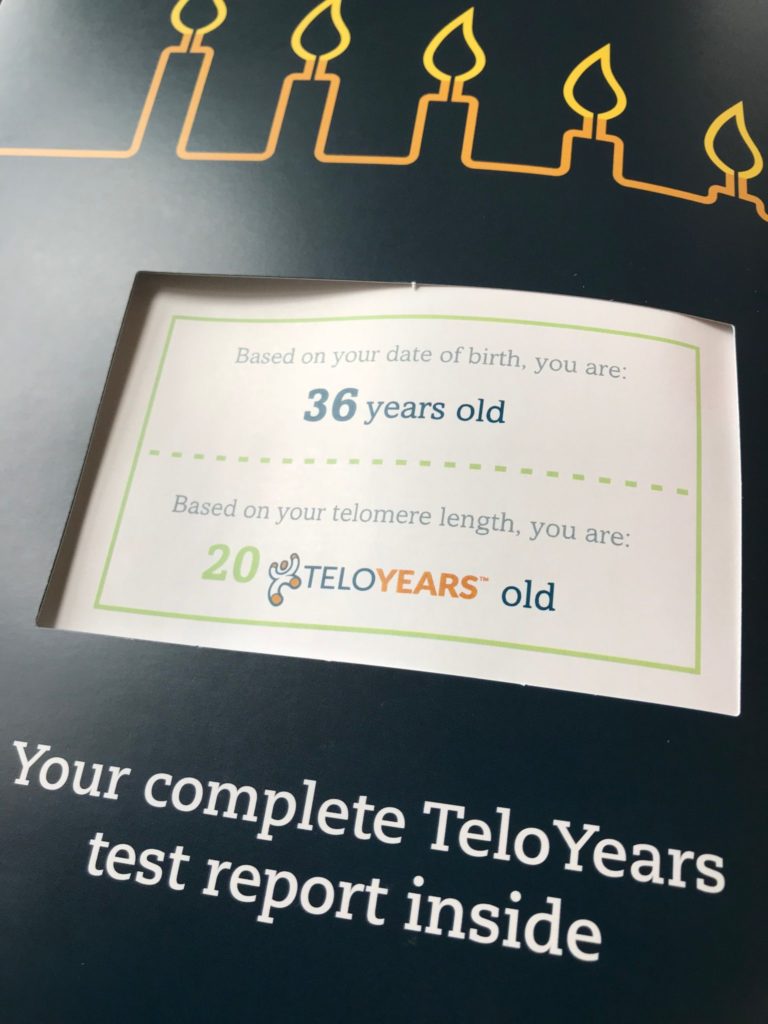
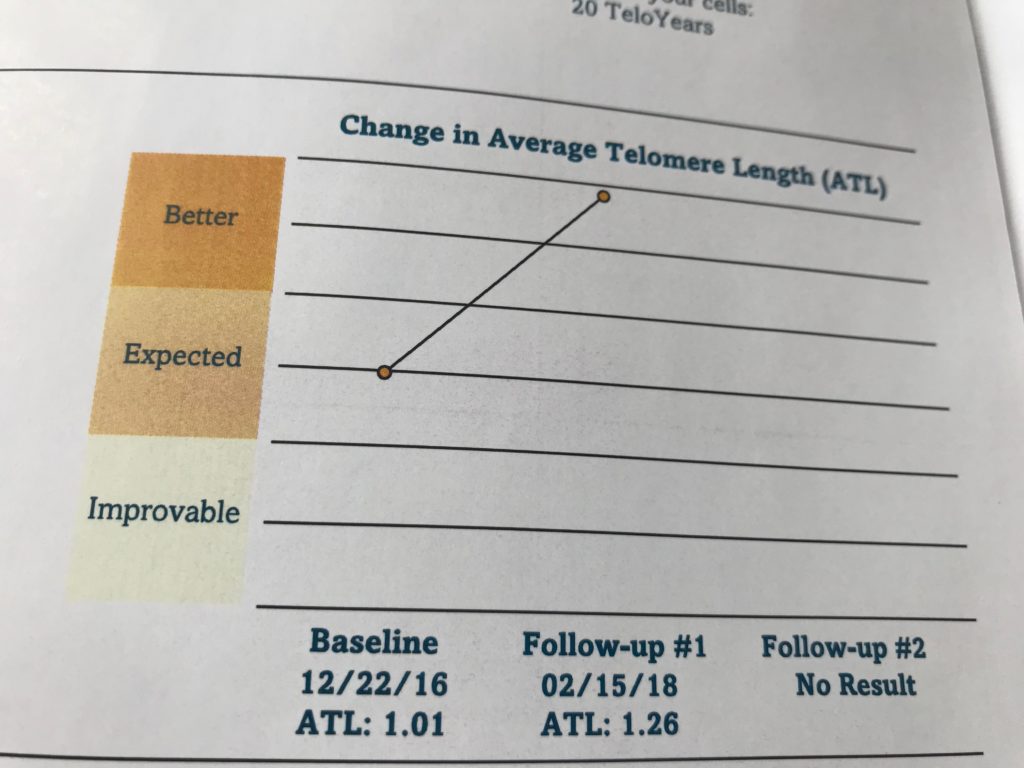
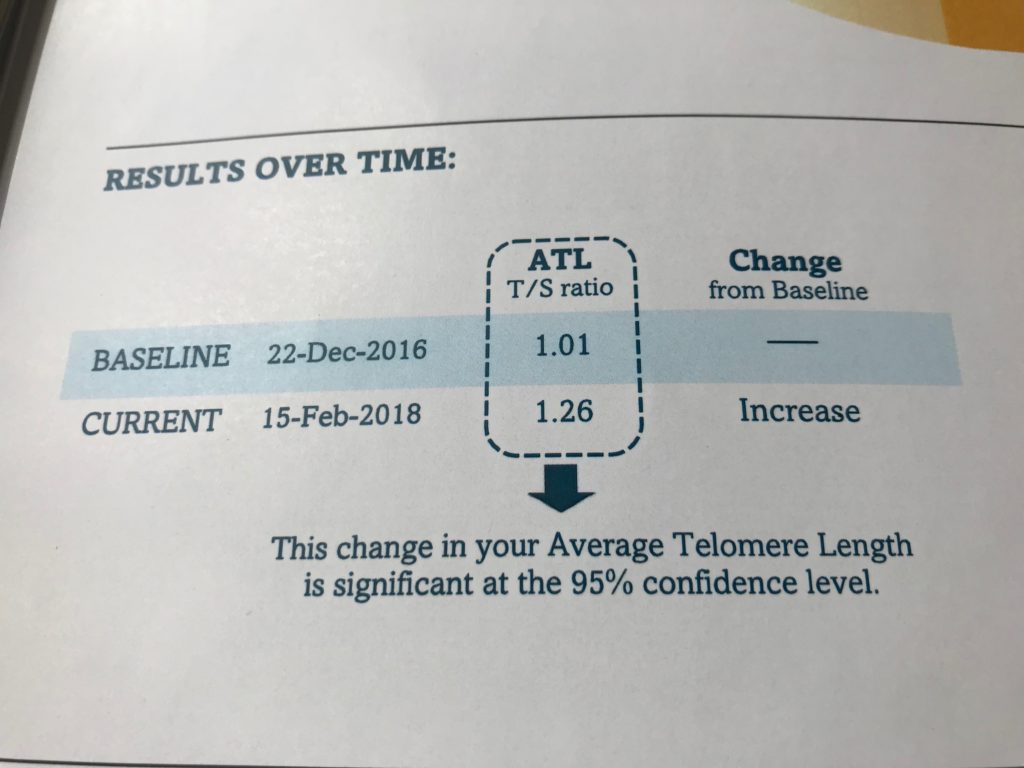

In short, compared to my first TeloYears test, in which I tested at a chronological age of 34 and a biological age of 37, and my second test, in which I tested at a chronological age of 35 and a biological age of 36, I'm now at a chronological age of 36 and a biological age of…
…20!
That's right: what you are about to read here in Part 2 and what you already discovered in Part 1 actually freaking' works. And as I briefly alluded to in Part 1, this isn't all about grasping at straws and an endless pursuit of trying to live longer simply for the sake of living longer or desperately “running from death”.
Instead, this is about looking, feeling and performing like a million bucks – being able to leap out of bed in the morning, jump and click your heels together, and tackle the day; being able to not just see your grandkids hit a home run but actually be out on the baseball field throwing the ball around with them; being able to have sex, climb mountains, do triathlons, lift weights and experience life's adventures in your 70's, 80's, 90's and beyond.
In other words, it's not just about quantity of years, but also the quality of those years. That's what I'm trying to teach you with posts like this. So, that being said, let's dive into Part 2, shall we?
Step 4: Eat A Big Ass Smoothie (Or Some Kind Of Biohacked Cocktail)
In the past, I've recorded some very interesting podcasts with folks such as Darin Olien and Shawn Stevenson, in which we discuss specific foods and compounds that can increase one's own stem cell health and support endogenous production or proliferation of stem cells.
Since I'm a big fan of the shotgun approach (AKA, take everything that's been proven to be good for something and simply shoving it all into my gaping maw at once), I dump quite a few such nutrients into my morning smoothie, including:
–Pau D' Arco bark tea blended with turmeric and sunflower lecithin as a smoothie “base” (read details here)
–Colostrum, 2 scoops into a smoothie
–Curcumin, found in both my morning multivitamin and also added to the bark tea mentioned above
–Marine phytoplankton, added as a whole dropperful into the smoothie
–100% aloe vera juice, added as a shot to the smoothie
–Coffeeberry fruit extract, added as a whole dropperful into the smoothie
–Moringa, added as a heaping tablespoon to the smoothie
Typically, I'll blend the concoction above with about 20g of a good, clean protein powder along with a big Theodore Roosevelt sized mug of ice and a dropperful of organic stevia, and then, once blended, I top with crunchy goodies such as organic unsweetened coconut flakes, spirulina or chlorella tablets, cacao nibs or organic frozen blueberries – all of which (except the coconut flakes perhaps) also confer good longevity-enhancing properties.
Finally, it should be noted that although my morning smoothies are hefty, voluminous, and push 800+ calories, I'm only consuming them after having fasted for the previous 12-16 hours (e.g. if I finish dinner at 8pm, the approximate time I'd eat breakfast would be about 10am), and during that fasted window, I'm typically performing some kind of easy morning workout, along with a cold soak or a cold shower. Once I drink this smoothie, I don't eat anything at all again for the next 4-6 hours.
Step 5: Don’t Work Like A Normal Person

I'm often asked how I get anything productive done when I'm “biohacking” all day long. After all, how can one churn out an article like the one you're reading when they're splayed out on the cold bathroom floor with a coffee enema up their butt?
In reality, the majority of the self-improvement techniques I use are simply things I'm incorporating passively while I work. Allow me to paint a picture for you to show you what I mean. As I type this article…
…my desktop essential oil diffuser is diffusing rosemary essential oil for cognition and memory…
…behind me is an infrared JOOVV light panel for promoting collagen and skin health, along with testosterone and nitric oxide production…
…on my head is a Vielight photobiomodulation device for enhancing alpha brain wave production and increasing mitochondrial activity in neural tissue…
…I'm sitting on a Salli saddle chair to keep my pelvic bones in alignment, but I'll switch frequently through the workday (about every 20 minutes) to a FluidStance balance board, a Topo Mat, a TruForm treadmill and a Mogo stool…
…I'm blasting the air I'm breathing with a NanoVi Eng3, which enhances DNA repair and good reactive oxygen species production…
…my overhead lights during the day blast me with blue light via the Lighting Science Awake & Alert Bulbs, and then switch to a RubyLux red bulb for the evening work…
…I have a Flexpulse PEMF device that I move around my body throughout the day as I'm working to hit any sore spots or injured areas…
…I'm sipping throughout the day on mushroom tea blends, green tea polyphenols, exogenous ketones and essential amino acids – all calorie-free ways to mimic calorie restriction, increase muscle repair and protein synthesis, and increase cognition…
…and most importantly, none of what you've just read takes me any additional workday time to implement. I walk into my office, hit a few switches, and jump into 4-5 hours of deep work with all this stuff working on my body while all I do is simply focus on working.
In other words, figure out how to hack your environment to sustain movement and “making your body better” throughout the workday, but figure out how to do it in a way that still allows you to be a productive member of society. You've just discovered how I do just that.
Step 6: Eat A Big Ass Salad
I'm a firm believer that about the maximum amount of deep, focused work that one can do on a daily basis is about 4-6 hours (read Cal Newport's book “Deep Work” to learn more about this idea). Based on this, after I've finished my morning smoothie around 9:30 or 10 am, I often don't emerge from my office to eat lunch until 2 or 3 pm.
My entire lunch – and frankly, every meal I eat each day – is highly focused on the concept of…
…”glycemic variability.”
In a nutshell, as you can see in the article, “Glycemic Variability: How Do We Measure It and Why Is It Important?“,glycemic variability (also known as “GV”) refers to blood glucose oscillations that occur throughout the day, including hypoglycemic periods and postprandial (after a meal) increases, as well as blood glucose fluctuations that occur at the same time on different days. According to the article I referred to above “the broad definition of GV considers the intraday glycemic excursions, including episodes of hyperglycemia and hypoglycemia”.
Now, if you find white lab coats sexy, science makes you salivate, and you know your biochemistry cycles back-and-forth, you may want to get into the nitty-gritty science of glycemic variability in this fantastic podcast by my friends from NourishBalanceThrive.
But in plain speak, glycemic variability basically refers to how much your blood sugar bounces around at any given point in your life. And when it comes to your health, it is, in my opinion, a more important variable to consider than cholesterol, vitamin D, minerals, telomere length, cortisol, testosterone or just about any biomarker one could ever measure (except, perhaps, inflammation, which I would rank right up there with glycemic variability).
This is why, in a food presentation I gave last month in New York City, entitled “A Biohacking Adventure: 7 Culinary Tactics For Enhancing Health & Longevity”, I began by tackling the concept of glycemic variability, and discussing a host of tactics to keeping blood sugar fluctuations at bay, including chewing your food 25-40 times, carb backloading, the pre-meal use of digestifs and bitters, two teaspoons of ceylon cinnamon each day, bitter melon extract , organic apple cider vinegar shots, fish oil, pre and/or post-meal physical activity and much more.
Based on this concept of glycemic variability, and also based on the concept that to reduce decision making fatigue and to reduce dietary variation (e.g. not knowing how many damn calories you're eating because your meals fluctuate so much) my lunch is just about the same thing every day, this is what my midday meal looks like:
I add a handful of wild plants or organic produce, such as arugula, nettle, spinach, thyme, cilantro, parsley, etc. to a large bowl. Over the plants, I put Japanese shirataki noodles (they're zero calories and zero carbohydrates) that I have sauteed – along with one can of sardines – in fennel seeds, olive oil, sea salt, black pepper, cayenne and turmeric. I then top with a handful of walnuts, brazil nuts, macadamia nuts, almonds or any other “healthy” nut and a squeeze of half a lemon. I then eat the entire salad wrapped like a burrito in a nori seaweed wrap. The size of my salad typically necessitates two seaweed wraps, and thus my lunch is basically two big-ass salad-sardine burritos. And that's lunch, folks. I can make it in 10 minutes flat, it tastes amazing, and if you haven't yet tried this salad method, you are, in my opinion, missing out on a crucial component of your culinary existence.
Step 7: Nap Like A Princess
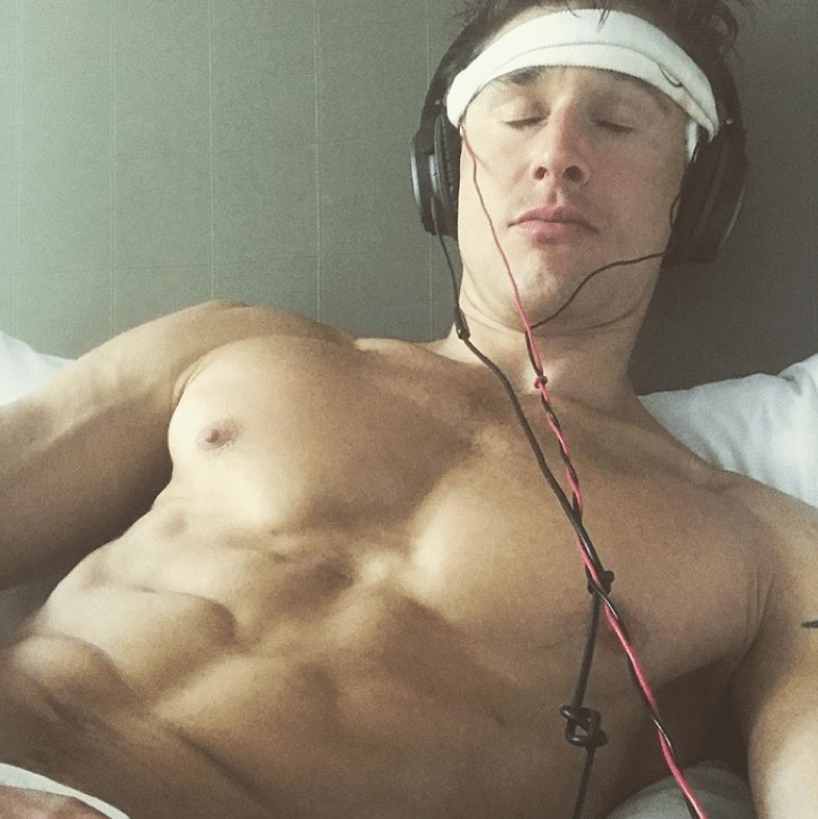
Lunch now gently settled in my stomach and my blood glucose well-stabilized, it is now time for my daily nap. Not only do I sleep 7-8 hours each night, but nearly every day of the week, I inject my body with an enormous “second surge” of energy by passing out in bed for an afternoon 20-45 minute siesta.
But – and you probably saw this coming – in the same way that I do not work like a normal person or eat like a normal person, I do not nap like a normal person. Here is my patented 3-step napping sequence, which allows me to blast my body with infrared rays, negative ions, artificial intelligence relaxation sounds and pulsated compression therapy, all while asleep.
Step 1: turn on Biomat. This bad boy produces deep-penetrating, far infrared rays along with negative ions that act on the cell membranes to restore a proper electrochemical gradient. It's basically like snuggling up with a warm, highly scientific teddy bear.
Step 2: slip into Normatec boots. Designed by a NASA engineer, these boots use pulsated compression to pump blood from my toes all the way up to my heart, making my legs feel light as a feather when I get up from my nap.
Step 3: turn on my Brain.FM app with Sony noise-blocking headphones. This app, which has settings for creativity, focus, and relaxation, uses a sequenced series of sounds to lull my body out of work mode and into sleep mode, and has settings for a 15, 30 or 45 minute power nap.
And that's it. Yes, I will admit: that is one damn spendy nap. But it is oh-so-glorious to wake up with a head as clear as a bell – ready to conquer my workout and crush the rest of the day, instead of spending the latter half of my day tired and demotivated with a slight haze of brain fog.
Step 8: Do A Weird Workout

Based on your built-in chronobiology, it's in the afternoon when your body temperature peaks, your post-workout protein synthesis peaks, your reaction time peaks and your ability to handle a difficult workout session peaks – making the latter half of the day a perfect time to throw down a difficult workout. This is far superior to working out hard in the morning, when your body already has produced a natural surge of cortisol and when you're far more likely to engage in post-workout compensatory eating and justifying sitting on your ass during the workday because you crushed a 5 am WOD.
So what do I mean by “weird workout”?
While I can often be found running through the outside forest, climbing ropes, hauling sandbags, carrying rocks and flipping tires, if my time is limited or I'm in an intensive season of writing, working or building Kion, I will definitely use specific biohacks to enhance the efficiency of my workout and squeeze a huge amount of fitness-building into a very short period of time.
For example, a typical afternoon workout for me would involve:
-15 minutes of hypoxic/hyperoxic training on my bicycle, which is set up next to a LiveO2 unit that allows me to switch between hypoxia (low oxygen) and hyperoxia (high oxygen) as I work through a series of short, explosive sprints. This exposes my body to the mitochondrial building equivalent of spending an entire 24 hours in a hyperbaric oxygen therapy chamber or going on a 3-hour bike ride, but squeezes it all into a brief 15 minute window.
-15 minutes “single-set-to-failure” training. I'll then move on to perform 60-90 seconds of an isometric contraction to complete failure by using a special force plate called a “PeakFitPro“, which pairs to my phone and allows me to completely exhaust a muscle group during one single, difficult set. A typical workout would include benchpress, pulldown, overhead press, deadlift and squat. Doug McGuff’s book Body By Science does a good job explaining how this approach develops both cardiovascular fitness and strength simultaneously, while resulting in a very large surge of post-workout growth hormone (which is enhanced even more by the fact that I do not eat anything for 2-3 hours following my afternoon workout).
-15 minutes infrared sauna. To boost red blood cell production and nitric oxide production, and to further enhance cardiovascular adaptations to the workout above, I'll finish things off with a sweat and several ELDOA and Core Foundation moves in a full spectrum infrared sauna.
You do the math. That's 45 minutes total. If you complete a workout like this 2-3x/week, you are using better living through science and fun, cool tools to gain big breakthroughs in fitness in a relatively short period of time. When combined with an active workday in which I take frequent breaks for movements such as kettlebell swings, hex bar deadlifts, burpees and jumping jacks, I can keep myself in very, very good shape with just 3-4 hours per week of formal training using the scenario I've just described.
Of course, I understand that a LiveO2 system, a PeakFitPro and a Clearlight infrared sauna cost a chunk of change. But look at it this way: if you're biohacking on a budget, you can simulate these type of workouts with less expensive equipment. For example, try 10 rounds of a 30-second sprint with a TrainingMask on, followed by a 30-second recovery with the mask off. Then move on to a super slow 60 seconds up, 60 seconds down repeat of pushup, pullup, overhead press, deadlift and squat. Finish up with an extremely hot soak in a hot tub, a dry sauna or a steam room at the gym. Voila!
Step 9: Be With People & Learn Stuff
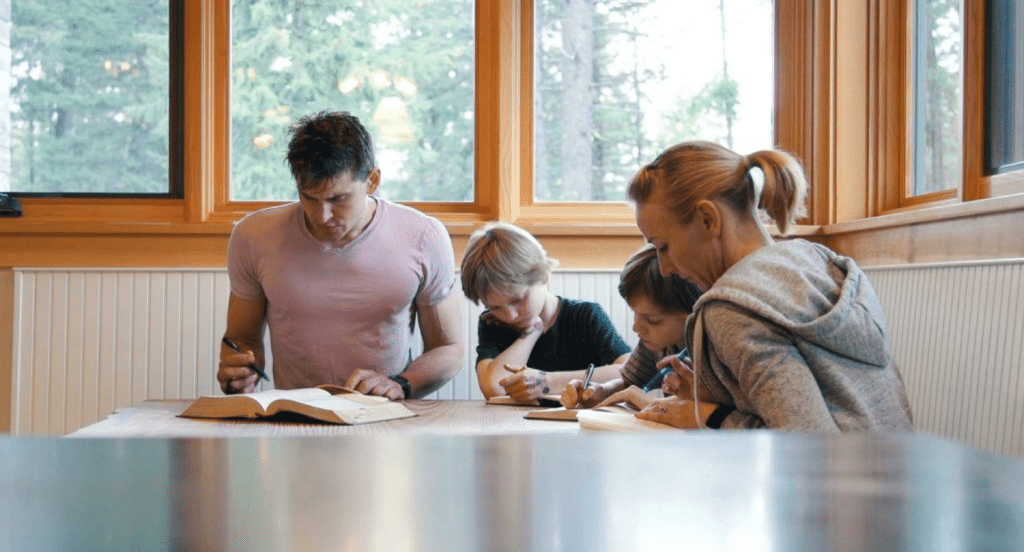
I've always taught my twin boys that love is the greatest emotion you can have in your life. Heck, love is the greatest emotion in the universe. In the book “The Blue Zones: Lessons for Living Longer From the People Who've Lived the Longest“, you can read about how love in relationships, love in families, being loved, feeling love and giving love is one of the biggest keys to happiness and longevity.
On the flipside, the mortality risk for people who find themselves socially isolated is just about equal to that caused by obesity and physical inactivity. Having close relationships actually increases your lifespan at a rate equal to that of quitting smoking (a Dr. James House at the University of Michigan has discovered the chance of dying over a period of 10 years increases by 10% for people who live alone or have only a few friends compared to people surrounded by friends and family). Dr. John Cacioppo from the University of Chicago and Dr. Steve Cole from UCLA have also researched the effects of loneliness on health, and shown that people who are socially isolated possess weaker immune systems and have higher rates of cancer, heart disease, heart attacks and strokes than people with more social connections, along with increased levels of inflammation, higher blood pressure, and higher heart rate.
This is why, as evening approaches, we place such an enormous value on hanging out as a family, eating dinner together, sharing our gratitude journals, gathering with friends, playing music, singing, sitting in the sauna and hot tub and (my personal favorite) playing Exploding Kittens and Bears vs. Babies.
The evening is also a time I often reserve to learn new stuff and “make smoke come out my ears”. Why? It's just another longevity tactic. See, for a long time, it was believed that as we age, the connections in our brain become fixed. But research has since shown that the brain never stops changing through learning. Neuroplasticity is the name given to this capacity of the brain to change with learning, literally by forming new neuronal connections and altering the internal structure of the existing synapses in the brain.
Take London taxi drivers, for example. They possess a larger posterior hippocampus than London bus drivers. This is because this specific region of the brain specializes in acquiring and using complex spatial information in order to navigate efficiently. Taxi drivers have to navigate around London while bus drivers follow a limited set of routes. No…I'm not cruising a taxi around town at night with my family. Instead, I'm a fan of relaxing but challenging activities that have been proven to induce neuroplasticity such as delving into a new language, reading a challenging book, or playing guitar and ukulele.
I'd be remiss not to mention the fact that the evening is also the time when – after restricting carbohydrates the entire day – I eat carbohydrates ad libitum (that means “as much as I feel like” for those of you who don't fancy Latin) from healthy starches and sirtuin-rich foods that promote longevity. This means that I typically eat about 100-200g of carbs from sources such as sweet potato, yam, taro, slow-fermented sourdough bread, berries, soaked and rinsed quinoa, amaranth, millet, etc. – along with a touch of dark chocolate and red wine. This is always preceded by a couple capsules of Kion Lean to shove that glucose into muscle and liver tissue more easily. If you really want to wrap your head better around why I do these carb evening “refeeds”, then check out the carb backloading program by my friend John Kiefer.
As for the wine? I do indeed have a specific timing sequence for any alcohol I drink at night. Here's a separate article I wrote that spells it out.
Step 10: Sleep Like A Ninja
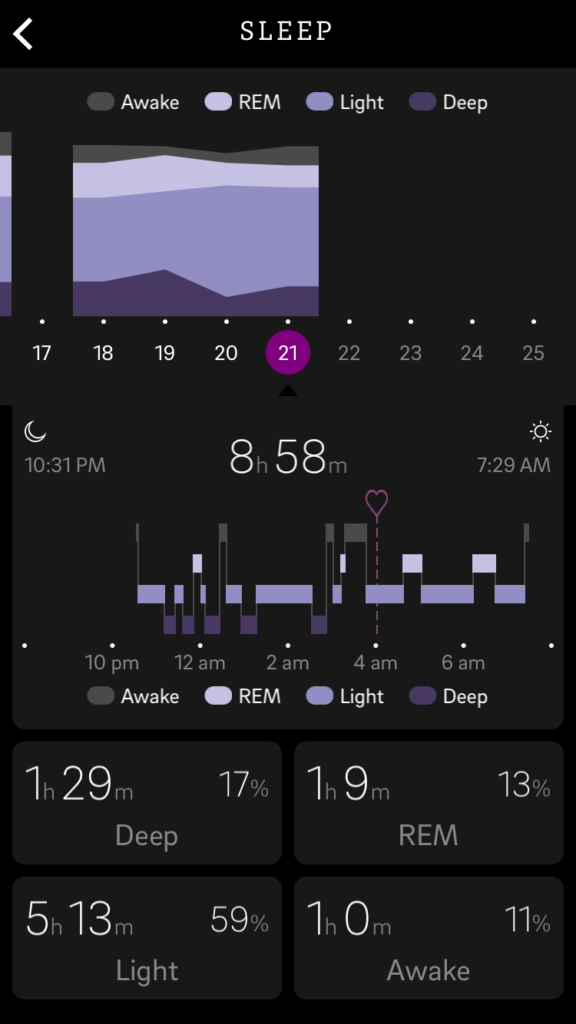 My sleep is amazing. I don't want to sound like I'm bragging, but after years of struggling with insomnia and poor sleep cycles or lack of deep sleep, I really have cracked the code on getting a good night's rest. My friend and Kion Certified Coach Alex Fergus has written an excellent post at “How To Improve Sleep: 25+ Experts Share Their Helpful Tips” that is jam-packed with plenty of amazing sleep hacks, but currently, my biggest wins are as follows:
My sleep is amazing. I don't want to sound like I'm bragging, but after years of struggling with insomnia and poor sleep cycles or lack of deep sleep, I really have cracked the code on getting a good night's rest. My friend and Kion Certified Coach Alex Fergus has written an excellent post at “How To Improve Sleep: 25+ Experts Share Their Helpful Tips” that is jam-packed with plenty of amazing sleep hacks, but currently, my biggest wins are as follows:
–Sleepstream app to play relaxing sounds and binaural beats while I sleep. I prefer to set it on the white noise-ish setting of “Sleepstream Noise” and use the “deep sleep” setting for the binaural beats.
–Chilipad. I set mine at 55 degrees to keep my core temperature low during the evening.
–Lavender essential oil. Similar to how I diffuse rosemary, peppermint or cinnamon in my office to keep me awake and alert, I diffuse lavender (or occasionally chamomile, rose or bergamot) at the bedside to enhance relaxation.
–Wraparound sleep mask. You need something luxurious that will block out all light – not the free, crappy sleep mask you received on your last international airline flight.
–Blue light blocking glasses. A must for any evening screen-viewing activities, and for a bonus, pair this with Iris installed on your computer and this nifty phone red light trick.
-Low blue lights in the bedroom. I prefer the “biological LED” sleepytime bulbs created by the company “Lighting Science”.
-PEMF via the Flexpulse, DeltaSleeper and/or Earthpulse. I have a few different Pulsed Electromagnetic Field devices and each acts somewhat similarly by simulating the natural electromagnetic frequencies the planet earth produces to enhance deep sleep.
–CBD. I take about 40mg before bed.
–Sleep remedy. I take one packet before bed (with the CBD) then another packet if I wake up during the night.
–CBD vape pen. I take a few puffs on this if I wake up during the night.
Similar to my office setup, this isn't as laborious or time-consuming as it appears at first glance. Within 5 minutes I can have all these sleep hacks set up and ready to rumble for a solid night of rest and recovery.
Summary
So that's it!
You can click here to go check out Part 1 if you missed it.
You can click here to get your own telomeres analyzed with Teloyears.
And sure…I know things can get confusing because as a self-experimenting immersive journalist and author I certainly try new supplements, tools, gear, technology and biohacks for many of the health and longevity enhancing goals you've just finished reading about. So yes, this means my “routine” two years from now may be markedly different than what you've just discovered, but my promise to you is that I will continue to keep you informed of all the new tactics I discover, implement and find success with so that I can tell you what works best, what doesn't work at all, and what simply gives you explosive diarrhea, a pounding headache, strange smelling sweat and odd skin growths. Fair enough?
And finally, if you have questions, thoughts or feedback for me about any of the ten steps you've just discovered, simply leave your comments below and I will reply! Thanks for reading.



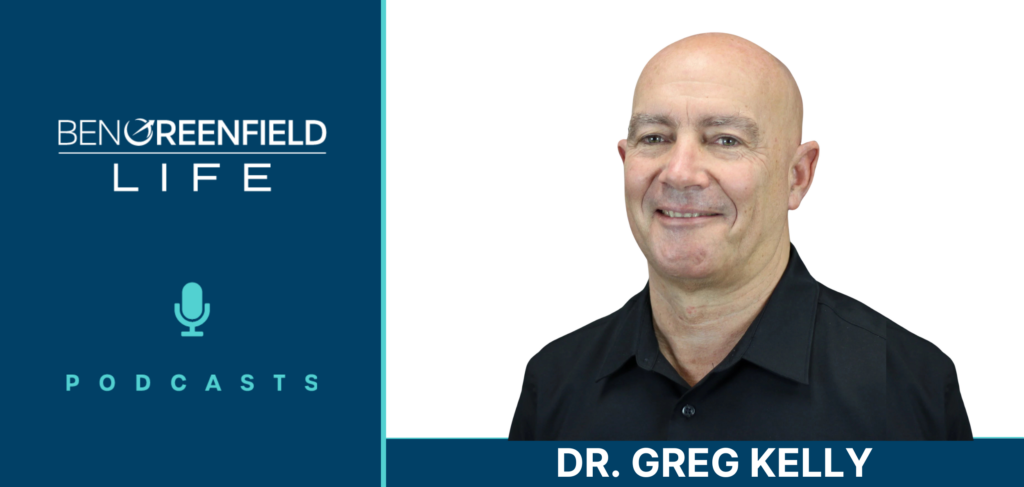
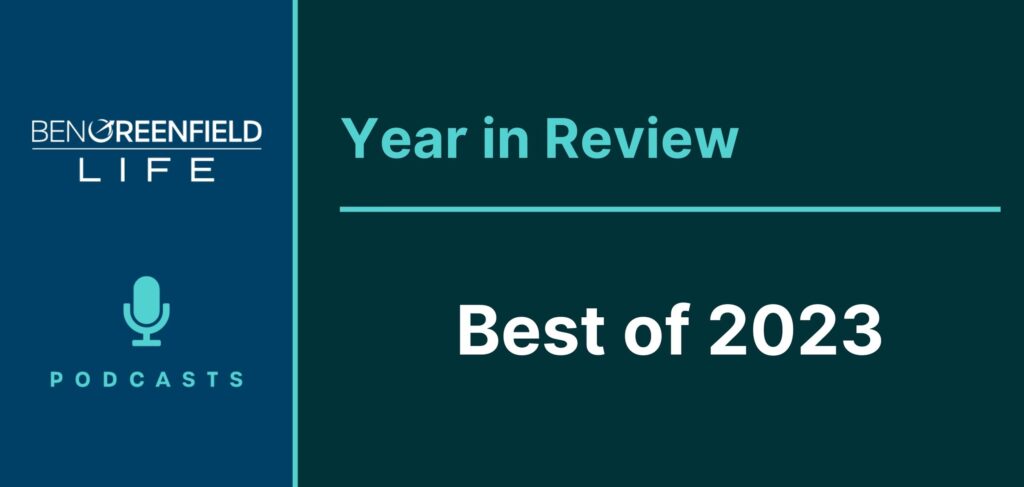


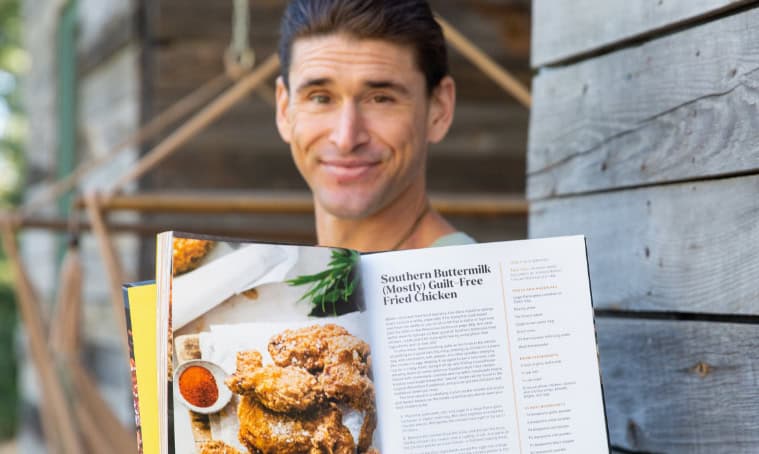

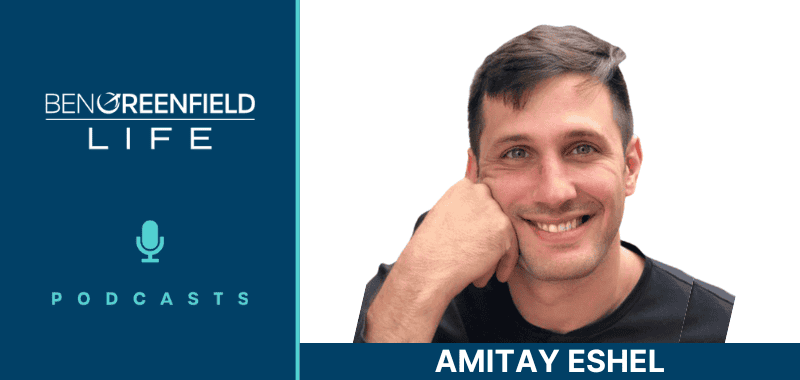




I was wanting to try the vape pen you mention but they have discontinued it since you wrote this post. Are you now using a new brand or have something you suggest?
Wow, amazing daily routine. What would you change (if anything) if you were female?
i just want to say that its great that your telomeres are younger than what they should be !
that is a wonderful gift that you have there.
my question here is this -how do you know its the special things you are consuming that is helping you keep young
as opposed to the simple fact that YOU might just have good genes?
have you tried eating a very poor diet and a sloppy lifestyle to see if its the food
and the lifestyle that is making you younger?
you might still look and feel young by eating a poor diet of fast food?
maybe having all the special food and tonics and colostrum ,DIDNT give you “younger” telomeres but a special quality of telomeres?
it might make a very good experiment whereas you take a handful of men who eat special diets and have young genes and make them eat fast food and soda every day. stay up at all hours of the night on the pc.
and then you take men who only eat fast food every day and make them eat a special diet -and train with weights and sleep a full 8 hours a day -just to see if its really in the food,drink and lifestyle .
at 38 i was going through a profound change of weakness!
i felt horrible and weak and tired all the time ,i looked like i was in my late 50’s –
i took every vitamin that might help or could help and it wasnt until i was in my 50’s that i found out that i had low testosterone.
from the neck down i looked young but the neck up i look horrible!
i had male pattern baldness type 5 ,and thats when you have lost most of your hair in a horse shoe pattern
my joints made a cracking noise that sounded like pop rocks – and i had a huge stomach of size 40 on the tape measure.
most of my life i was always slim and a size 30 inch pants and for ME -the aging process began much quicker with my low testosterone. i took vitamin D and that helped me greatly! i had a DR that refused to think anything was wrong with me –
she kept saying its normal for a man my age to lose testosterone- my number was 328 on the testosterone meter.
and thats me NOT having sex for more than 8 months! if i had sex ,i would be bedridden for 2 days. it would just kill my energy level!
so what im also writing here is that testosterone and vitamin D -might have an influence on the male body and if its not high enough -the body will age prematurely.
Hi Ben are you still doing those contrast showers you mentioned on the mind valley talk video on YouTube?
I was starting to really enjoy them but realised I hadn’t researched them and can’t actually find much online about them at all. Cheers.
Yes.
Do you still recommend honey (with coconut oil and sea salt) before bed to promote sleep? Would that interrupt the fast that began when you finished dinner? Does having a tiny shot of glucose help your brain “clean house” while you are asleep?
Yes, it would break your fast, but it can still be helpful for sleep… Simply start your fast after consuming your "treat", and probably best to do so a couple hours before sleep.
Thank you for replying so quickly! I have tried what you suggested for the last month or so, and I’m not sure the honey/oil/salt mix is as effective when consumed a few hours before sleep. I’ve read that some people keep this sort of salty sweet fat “treat” mixed up in a jar by their bed to take immediately before sleep, because it is meant to fuel your brain during sleep, not to be burned off by your body by activity in the hours before sleep (not exercise, just movement and tasks). So you have an opinion on this?
My associate just said – Ben is a better version of you! (currently working at my desk with a blue light filter on the computer and kneeling on an air disc). Great post, keep it up
I did a teloyears in May 2017 and was 4% older than my chronological age. I re-tested in Sept 2018 and was 29% younger than my chronological age! I am now 54 and am 37 in teloyears
I live a healthy lifestyle, had been taking supplements and exercising, using a sauna, intermittent fasting, eating lchf, always trying to optimize sleep. What I changed between the 2 tests was:
– started extended fasting (42-120 hours)
– took NAD+ (nicotinimide riboside) the last 7 months
– took DHEA the last 7 months
– started bio-identical estrogen and progesterone around the time of the first test
– started lifting weights regularly and built muscle
– used Oura to track sleep (although haven’t really made any progress on improvement)
I forgot, I also started taking iodine during this time. This has improved my thyroid function and improved my fluoride toxicity.
Ben, regarding glycemic variability, what blood glucose range should a healthy, fit, non-diabetic in their 20’s shoot for? Thanks.
Hi Ben! Do you have a “in the bathroom” routine of which cosmetic (toothpaste, cleansers, body wash, etc ) that you do? Do you always dry brush ? Do you always do a facial cleanser ? How many times a week do you shampoo and what do you use ? I’m intrigued because everything else that you suggested that I have tried has worked ! Thanks !
I was wondering how running a marathon would affect your telomere testing? I ran the LA Marathon on Sunday so I sent Teloyears a quick email asking if it would make sense to wait before testing.
They said to wait a MONTH! In a month I’ll be almost ready for my next marathon on April 28th! So while it won’t be a few days after a marathon, I’ll still be in heavy training possibly having run a 20+ miler close to the testing date.
When would be the optimal time to test and how much does a marathon affect the testing?
I would listen to them, they're the experts.
Okay, thanks!
Hey Ben, do you have any suggestions on becoming a health/wellness “coach” or consultant. Education for it. Ways to get there.
GetKion.com/coaching
Hey Ben,
Do you have anything on alcohol use and the human body. Such as avoid it completely? The major effects aside from just liver? How to detox it from your body, etc.
Thanks!
Just do a search on my site. All the info I have on alcohol is there. I use it sparingly.
What do you recommend for someone new to this as myself. Diet was off, excercise not routine, bad sleep patterns, etc. I want to dive in to this lifestyle instead of feeling sluggish and fatigued all the time. Just unsure how/where to start. I’m 36 as well. I appreciate you sharing your knowledge!
This is a good place to start: https://bengreenfieldfitness.com/article/anti-agi… Also, you should definitely join the Kion Community. It's an online community I built of like-minded people who both have advice and are seeking advice! Facebook.com/groups/getkion/
Where did you get the idea Kiefer is a Dr?
I'm not sure, because he's not. It's been edited, thank you for bringing this to my attention!
Hey Ben, for your morning smoothie, do you add the ingredients you mention above to the greens/coconut milk etc. smoothie you describe here: https://bengreenfieldfitness.com/article/nutritio…
Or have you switched to not using any greens at all? Thanks, you’re a great inspiration!
Hi Ben do you still include leafy greens and half an avocado with the new smoothy ingredients or are you currently just using what you listed in this article? Thanks!
I vary, but currently it's exactly as I described in this article.
Hi Ben – would the x3 Bar be a good tool for doing the single sets to failure workout at home?
Yes it works very well for that.
I love all the details of these posts! I wonder, is it possible to distill this down using the 80/20 rule? What are the few things that might be affordable to the masses (subjective I know) that would give the most bang for the buck? Thanks for all the great content!
Cold showers, a morning routine, staying active at work, optimizing sleep and having family time at end of day.
Beautiful..just banged into your channel….Ben…regard s to yourself and family..fiona..
Question: Any advice on an aloe vera drink that is primarily gel without the latex portion of the leaves (“juice”)?
Ben – this is a great article – thanks for sharing.
Curious why specifically you use Pau D’ Arco bark tea – ie what benefits are you hoping to realize by consuming it?
Also, on the telomere improvement – how much time passed between the 2 measurements? And, you are a pretty healthy guy to begin with – do you have any thoughts as to why your first measurement was not better?
A little over a year, it's all in the article. As far as my original numbers, I spent a decade of my life destroying my body by racing Ironmans, competing as a bodybuilder, etc. A lot of these things can shorten telomeres or take years off of your life.
Hello, I found out things that made me wonder when you said the telomers got smaller by attending IronMans and bodybuilding … Then what about physical activity? Is it good or not to exercise, sports? Or does the intensity / complexity of exercise matter?
Exercise is obviously a positive activity, but there’s an upper limit as with all things… The intensity and rigors of something like an ironman over time can have implications on hormone levels, recovery, etc. That’s why I’ve become so fascinated with the idea of “minimum effective dose”
It's in the article. Stem cell health!
Hi Ben do you still recommend epithalon for longevity?
It's a pretty good one, yes. Just have to make sure you get it from a good source. Go read my posts on bpc-157 and tb-500 or search for "peptides" here on my site.
Yes, more info here: https://bengreenfieldfitness.com/article/anti-agi…